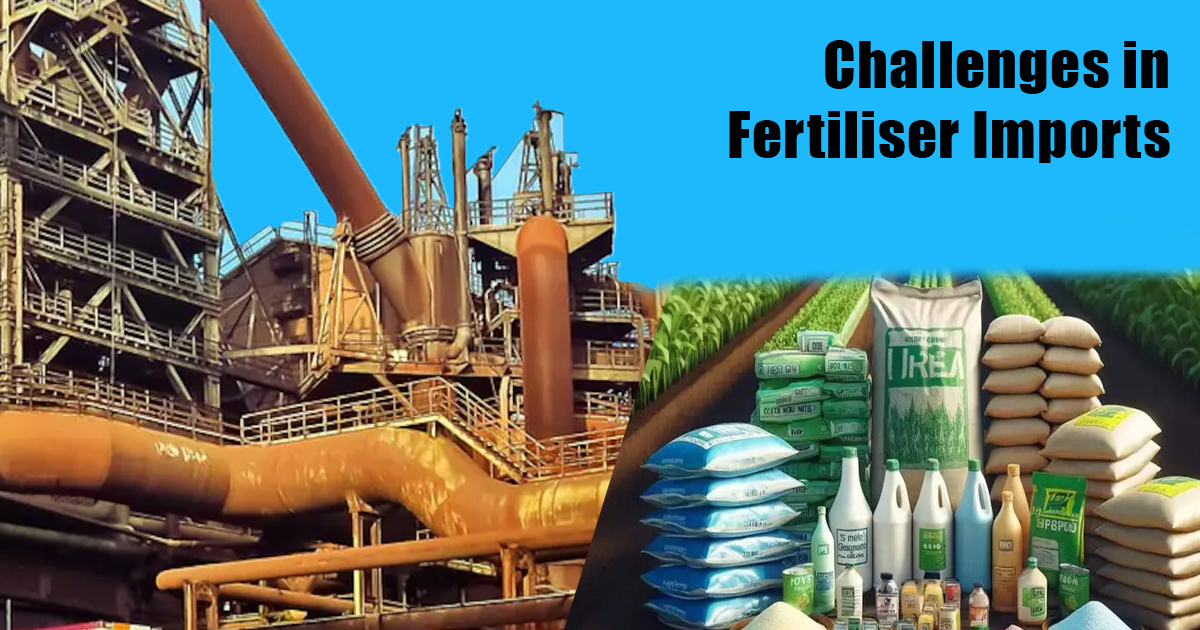
Context (TH): The ongoing Ukraine and Gaza conflicts have raised concerns over potential price surges in raw materials essential for manufacturing petroleum-based fertilisers.
About Fertilisers:
- Definition: Fertilisers are chemical substances, either extracted or synthesized, that provide plants with essential nutrients. These nutrients are crucial for agricultural productivity, helping boost crop yields.
- Types of Fertilisers in India: NPK fertilisers (Nitrogen, Phosphorus, and Potassium) are the most commonly used in India, with urea being the most-consumed fertiliser.
- Primary Nutrients (Macronutrients): Nitrogen (N), Phosphorus (P), Potassium (K), Calcium (Ca), Sulfur (S), and Magnesium (Mg) are required in larger amounts for plant growth.
- Secondary Nutrients (Micronutrients): Elements like Iron (Fe), Zinc (Zn), Copper (Cu), Boron (B), Manganese (Mn), Molybdenum (Mo), and Chlorine (Cl) are needed in smaller quantities.
Current Fertiliser Import Landscape:
- India’s domestic fertiliser production is insufficient to meet the national demand, resulting in heavy reliance on imports. According to the 2023 Standing Committee of Parliament report:
- Urea: 20% of domestic demand is met through imports.
- Diammonium Phosphate (DAP): Imports fulfill 50-60% of the requirement.
- Muriate of Potash (MOP): Completely reliant on imports.
The report highlights the need for self-sufficiency to ensure stable fertiliser supplies.
Challenges in Fertiliser Imports:
- Dependence on Imports: High reliance on imported fertilisers like urea, DAP, and MOP leaves India vulnerable to global supply disruptions and price volatility.
- Limited Global Suppliers: Only a few suppliers provide essential raw materials, such as rock phosphate, phosphoric acid, and ammonia, limiting India’s bargaining power in international markets.
- Domestic Production Deficit: India’s fertiliser production capacity falls short of the total demand, making imports necessary to cover the gap.
- Geopolitical Conflicts: Conflicts in Ukraine and West Asia affect the availability and cost of raw materials vital for fertiliser production, especially petroleum-based inputs.
- Supply Chain Disruptions: Geopolitical tensions and other factors cause delays and shortages in fertiliser imports.
- Subsidy Burden: High import costs increase the government’s subsidy expenditure, especially for urea, which strains the national budget.
Government Initiatives to Boost Fertiliser Production:
- Nutrient-Based Subsidy (NBS): Introduced in 2021 to include potassium from molasses, aiming to stimulate local production and reduce import dependency.
- New Investment Policy (NIP): Supports setting up new urea manufacturing units by public sector undertakings (PSUs) and private companies, increasing production capacity from 207.54 lakh metric tonnes per annum (LMTPA) in 2014-15 to 283.74 LMTPA.
- Public-Private Partnerships: Collaborations between public and private firms have led to increased urea production, such as the Ramagundam Fertilisers plant in Telangana and Hindustan Urvarak & Rasayan facilities in northern states.
Recommendations for the Future:
- Enhance Domestic Production: Continue establishing new urea plants to expand domestic capacity and reduce import dependence.
- Sustainability Measures: Implement soil health programs and train farmers on efficient fertiliser use.
- Research and Development: Invest in alternative fertilisers and sustainable farming methods.
- Promote Alternatives: Encourage nano-urea, natural farming, and bio-fertilisers to reduce dependency on chemical fertilisers.
- Policy Reforms: Support policies fostering investment from private and cooperative sectors in fertiliser production.




